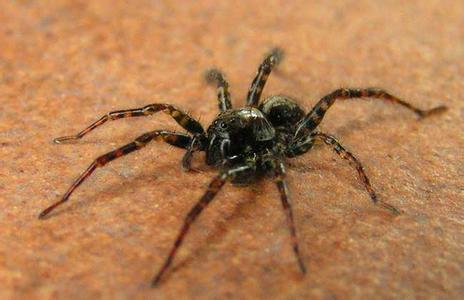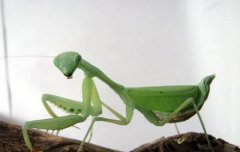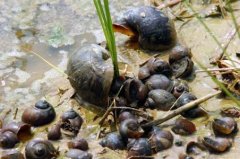How to control mites scientifically? What are the control methods of mite pests?
What do you know about the application of predatory mites in agricultural pests? What are the characteristics of predatory mites in agricultural pests? If you want to know, let's take a look.
Biological control emphasizes the use of predatory natural enemies to restrain the development of pest populations, so that the harm of pests to cash crops can be reduced to a degree acceptable to us. During this period, it involves the density of release, the timing of release, the relationship between natural enemies and prey, and how to enhance the inhibition of natural enemies to pests in nature. These data need long-term biological and ecological discussion, in order to maximize the effect of biological control technology in the field. In any case, the pursuit of pesticide-free and high-quality agricultural products is the trend of the times, and the sustainable development of these plant mite natural enemies and the control of more crop pests (mites) will be just around the corner.

With the characteristics of quick effect and convenient application, chemicals have become an important method to control pests of cash crops in the process of agricultural production for a long time. However, with the increasing awareness of consumers, in addition to ensuring agricultural production, high-quality agricultural products that emphasize no pesticide residues, eat at ease and eat healthily have become the mainstream of the consumer market. In Taiwan, which is located in the subtropical climate, diseases and insect pests are suitable for occurrence and various kinds in this environment, and the harm to cash crops is undoubtedly the biggest limiting factor of agricultural production. Therefore, under the dual consideration of ensuring agricultural production and providing high-quality agricultural products with safe consumers, the biological control strategy of "pest control" will be a technology with great potential for development.
Biological control is an existing ecological phenomenon in nature, which has been evolving in the biological food chain for thousands of years. The most famous example in history is that oranges in California were damaged by Icerya purchasi in 1868. Scholars introduced the natural enemy Australian ladybug (Rodolia cardinalis) to Australia, the origin of the beetles, and finally saved the citrus industry on the verge of bankruptcy. On the other hand, the natural enemies of predatory mites were used in the United States in the 1970s to release a large number of Farras plant mites (Amblyseius fallacis), Chilean plant mites (Phytoseius persimilis), etc., to control the two-point leaf mites in strawberry orchards and achieved specific results. Although Taiwan introduced the above two species of plant mites to control harmful mites in strawberries and tea gardens in the 1980s, perhaps because natural enemies could not fully adapt to Taiwan's field climate, the effect was not satisfactory. In recent years, under the active development of agricultural research institutions and ZTE University, there have been exciting results in applying the original local plant mites to catch plant mites and improve their predation ability to pests (mites). For example, the agricultural improvement farm in Taichung District uses egg-shaped plant mites (Amblyseius ovalis) to control cucumber silver leaf whitefly in the net room, which can effectively inhibit the population of silver leaf whitefly from 10-15 adult mites per plant at the early stage of flowering to the late harvest stage of cucurbit. the control rate is more than 80%, and insecticides can be avoided and cucumber yield can be ensured during this period. On the other hand, the insect department of ZTE University used Wen's plant mite (Amblyseius womersleyi) to control Tetranychus sinensis without acaricides in the whole period, and achieved high quality and high yield.
- Prev

Mantis breeding: can little praying mantis be raised by itself? How to raise mantis?
Using fruit flies to raise small mantis, have you heard of this method of raising mantis? If you want to learn this method of ecological farming, let's take a look at it together. Predatory natural enemies are part of the predatory food chain, such as mantis catching cicadas and yellow finches.
- Next

Harm of Oncomelania hupensis: is Oncomelania hupensis a pest? How to destroy the eggs of Fushu snail?
The snail often appears in the rice field, but the snail is a disease and insect, it can harm the growth of rice, so how do you control it? If you want to know more scientific prevention and treatment methods, let's take a look at them. Due to the rapid reproduction rate of Oncomelania hupensis in Taiwan
Related
- A one-day flower show brings 130 million yuan in orders! Nanhai, this Phalaenopsis exhibition is amazing
- What do the flower language and meaning of Lutheran tree mean? Precautions for planting Lutheran tree
- Encounter Chaoshan Kongfu tea, not without this cup of Phoenix single clump
- The durian market in Vietnam and Thailand is flooded. The price of imported durian has plummeted by 30-40% in a month.
- Shanghai solved the problem of local vegetable supply by planting 80,000 mu of green leafy vegetables.
- Wageningen University has become the best agricultural university in the world for the seventh time in a row.
- The strongest export season of South African grapes is full of challenges, with exports to Russia falling sharply by 21%.
- Sri Lanka is on the verge of bankruptcy, "Tea for debt" Organic Agriculture Revolution aggravates the Food crisis?
- Turning waste into earthworm manure and worm manure into organic fertilizer-A new choice for auxiliary farming
- Organic rice growers shoulder the responsibility of nurturing agricultural talents! Yinchuan Sustainable Farm with Organic Life Camp

